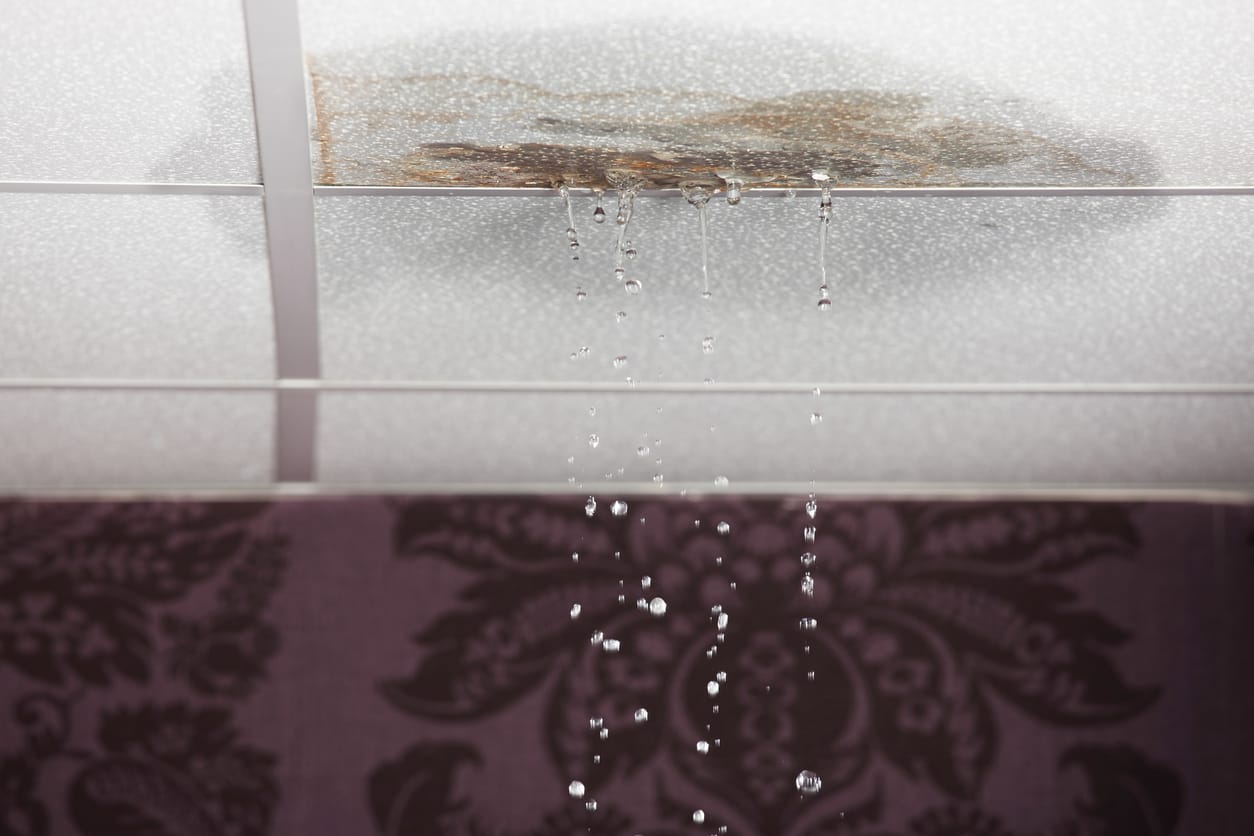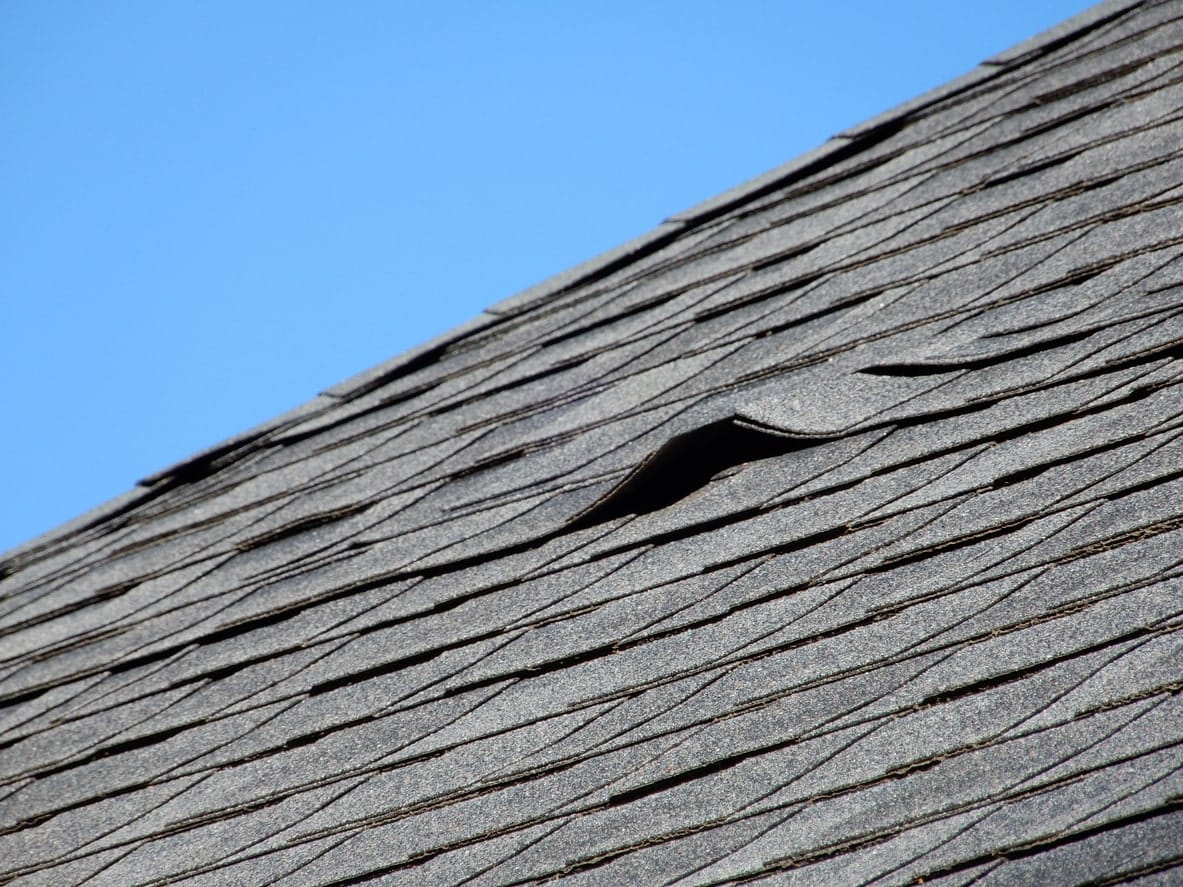5 Simple Signs of Water Damage in Your Roof
No one wants to think about it, but if the worst happens, your roof can take water damage.
It’s a problem, but if you catch it quickly then you can rectify it without too much stress or cost.
Here’s 5 signs your roof has taken on water damage, and what you can do about it.
How Can Your Roof Take Water Damage?
There’s a few different ways in which your roof can be damaged by water.
– Holes
In most cases, the roof will have developed a chink in its ‘armor’, meaning that water has been allowed to get through.
For example, if there are shingles missing, then water can get underneath and start causing damage.
– Gutter Problems
You can also get damage if your guttering is overflowing.
This usually happens when there is debris in your gutters, meaning water overflows out of them and onto your roof.
It can also happen when water freezes in the gutters over the winter, and thaws out, overflowing onto the roof itself.
– From Within Your Home
Water damage in your roof can come from the inside of your home, too.
If there is poor insulation in your home, especially your roof, then condensation can start to form.
When this happens, water starts pooling and it can start to rot roof timbers. This is why it’s so important to check your attic space as well as the outside portion of your roof.
5 Signs Your Roof Has Taken Water Damage
So, how can you know if there’s water damage in your roof? Here’s the signs you should be looking for:
1. Curling Or Buckling Shingles:
This is a sign that you’ll spot as soon as you get up on your roof. Obviously, your shingles should be lying flat when they’re on your roof.
If they’re curling up at the edges, or buckling, that’s a sign that they’ve been in excessive contact with water.
Water could well be pooling beneath them, so you’ll want to address this as soon as possible.
2. Water Spots On Your Ceiling:
Nearly everyone has experienced water spots on their ceiling at one time or another.
If you see these in your home, it’s a sign that you need to handle a water leak, sooner rather than later.
Sometimes they may not be the sign of a leak, but you’ll want to check them out as soon as possible.
3. Mold In Your Attic:
If there’s condensation in your attic, then you’ll find that mold is building up.
This can be what’s causing the water spots on your ceilings.
This can be cleared up fairly easily, but you want to catch it quickly to ensure that it’s not causing more damage.
4. Loose Or Rusted Flashing:
This is the sign you want to look for when you don’t have an attic to go into and check.
When your flashing is loose or rusted, that’s a sign that water has got in underneath it and has started causing damage.
Check the damage, and have it repaired before you replace the flashing itself.
5. Missing Granules:
The granules on your roof will add texture to your shingles, but they also have several important uses.
They add to the roof’s UV protection, prevent fire damage, and make the shingles generally more durable.
Over time, you will lose some, but a lot of lost granules in a short amount of time isn’t good.
If you’re seeing granules around the perimeter of your house, then your roof is less protected from the rain and in danger of suffering water damage.
How To Check For Damage
Now you know what you’re looking for, you’ll need to ensure that you’re checking your roof.
Twice a year, you want to get up on a ladder and check your roof for the signs of water damage above.
When you do, ensure you’re not walking on the roof unless you really have to. This keeps you safer, and prevents further damage to your roof that you’ll have to repair later.
You’ll also want to get into your attic space and take a look around.
Check carefully for water damage, and see if you can see light coming in through the roof. This is a sign that there’s shingles missing from your roof, which can let water in.
How To Prevent Water Damage In The Future
There’s a few things you can do to ensure that you keep your roof safe from leaks in the future.
1. Inspect Your Roof
Firstly, when you inspect your roof, take note of any missing shingles. You’ll want to replace them as soon as possible, to ensure that your roof is fully protected.
If you have a flat roof, you’ll want to be on the lookout for ‘ponding’. This is when water begins to collect on the roof.
If you’re seeing any ponding on the roof, you’ll want to fix it as soon as possible.
If you don’t, the water can start making its way through and causing damage.
The best thing to do is call a roofing company and ask them to handle it for you, to stop anything from happening.
2. Keep Gutters Clear
You’ll want to keep your gutters clear, to stop them from overflowing.
You can get up there regularly and clear them out, or install a gutter guard that will stop debris from falling in.
3. Check Your Roof Flashing
Finally, check your flashing to ensure it’s not damaged or coming loose.
The flashing will protect any puncture points in your roof, such as from solar panel installation.
If you see damage, have it replaced as soon as possible.
How to Repair Your Roof After Finding Damage
In some cases, if you’re quite handy with home repair, you can repair some of the damage to your roof yourself.
This is especially true if you’ve caught a problem quickly. Issues like mold can be solved yourself, with the appropriate products and know how.
If there’s more established damage though, you’ll want to call in the experts.
An expert roofer can help repair the damage, and put in safeguards to ensure that you won’t suffer another leak again.
Now you know how to spot and prevent water damage on your roof. With regular inspections, you can keep your roof in good shape.



